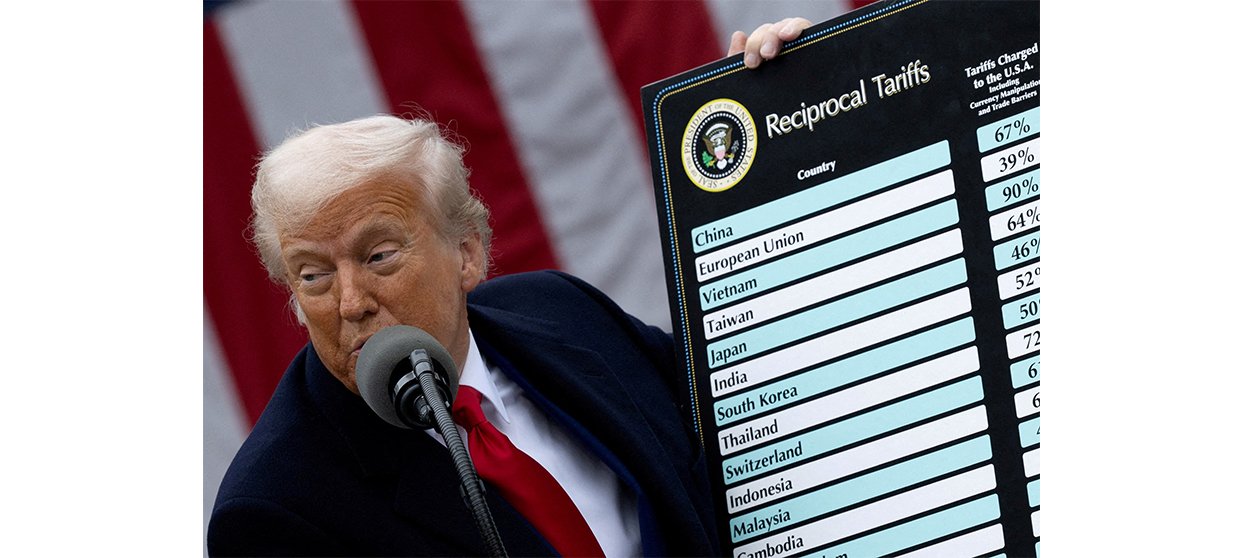ABC: President Donald Trump is set to slap tariffs as high as 50% on dozens of countries next week, including top trade partners like Canada, Mexico, Japan and the European Union.
The levies, which are scheduled to take effect Aug. 1, would dramatically escalate U.S. tariff policy and threaten to hike prices for everyday goods ranging from coffee to shoes.
Trump delayed the so-called “reciprocal tariffs” in April, vowing then to strike roughly 90 trade deals in 90 days. For his part, the president has insisted that the on-again, off-again levies make up a key part of his negotiation strategy.
So far, the White House says it has reached trade agreements with the United Kingdom, Vietnam and Indonesia, as well as a preliminary accord with China.
“The president and his trade team want to cut the best deals for the American people and the American worker,” White House press secretary Karoline Leavitt said last month when she announced the Aug. 1 deadline.
Here’s what to know about the approaching tariff deadline:
What is Trump’s Aug. 1 tariff deadline?
A slew of steep, country-specific tariffs will take effect on Aug. 1 unless targeted nations reach a trade deal with the U.S. beforehand, the White House said earlier this month.
Examples include a 50% tariff on Brazil, a 35% tariff on Canada, a 30% tariff on the EU and Mexico, and 25% tariffs on Japan and South Korea. Each of those countries is among the top exporters of goods to the U.S.
Smaller trade partners are also set to face tariffs. Cambodia and Bangladesh, two key sources of apparel imports, will face tariffs of 36% and 35%, respectively.
The tariffs resemble levies that were placed on more than 90 countries on April 2. Those reciprocal tariffs were delayed hours after they took effect, when the stock market reacted with its worst single-day performance since the COVID-19 pandemic.
Trump has sent letters to leaders of dozens of countries outlining the tariff levels set to begin on Aug. 1.
Could Trump delay the Aug. 1 tariff deadline?
In recent months, Trump has rolled back some of his steepest tariffs, meaning delays could be possible in the case of the Aug. 1 deadline. The Trump administration appears to have stood largely behind the deadline in recent days, however.
On Sunday, Commerce Secretary Howard Lutnick referred to Aug. 1 as a “hard deadline.”
“The new tariff rates will come in,” Lutnick told CNBC, while also acknowledging the possibility of continued negotiations: “Nothing stops countries from talking to us after August 1.”
Speaking a day later, Treasury Secretary Scott Bessent appeared to float the opportunity for an extension for some countries. When asked whether the White House could offer an extension to nations engaged in productive discussions, Bessent told CNBC, “We’ll see what the president wants to do.”
Could Trump’s Aug. 1 tariffs raise prices?
Price hikes could hit coffee, shoes, appliances and a range of other products if additional tariffs take effect on Aug. 1, analysts previously told ABC News.
Importers typically pass along a share of the tariff-related tax burden onto consumers in the form of price hikes.
Tariffs put forward so far by Trump are expected to cost an average household an additional $2,400 this year, the Yale Budget Lab found earlier this month.
Trump’s proposed 50% tariffs on copper could raise prices for an array of goods, ranging from home fixtures to electric vehicles, analysts previously said.
Where do tariffs stand now?
Trump has dialed back some of his steepest tariffs in recent weeks, while another batch of tariffs remains in legal limbo following a pair of federal court rulings in May, though the levies remain in place for now.
A trade agreement last month between the U.S. and China slashed tit-for-tat tariffs between the world’s two largest economies.
Still, an across-the-board 10% tariff applies to nearly all U.S. imports, except for semiconductors, pharmaceuticals and some other items. Trump has also placed a 50% tariff on steel and aluminum.
Goods from Mexico and Canada face tariffs of 25%, though the measure excludes products covered under the United States-Mexico-Canada Agreement, or USMCA.
In May, Trump vowed to double steel and aluminum tariffs. Tariffs still apply to autos and car parts.







